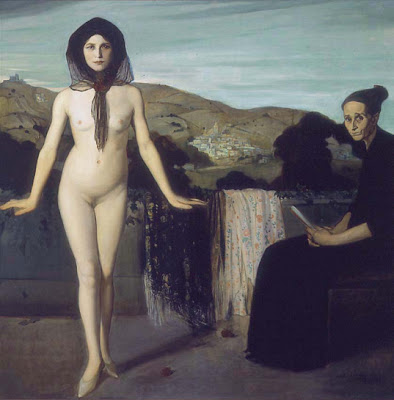La bailarina desnuda (1907-1909)
Oil on canvas
151 x 150 cm
Andres Blaisten Museum
This artist from a well to-do family of Porfirian times studied in the National Preparatory School in Mexico City and became involved with the intellectuals and artists of the "Ateneo de la Juventud" and the magazine Revista Moderna. He studied in the National School of Fine Arts along with Diego Rivera and Saturnino Herrán. With the help of his family, he left for Europe where he exhibited with success in Spain, Italy and France. He returned triumphant to Mexico and in 1907 showed his work in the artistic world of the belle epoque. He left again for France, where he was to live for over 30 years, exhibited in the Paris Autumn Salon and investigated the theories of Cubism. In 1921, he completely embraced the ideas of Cézanne and Giotto. he painted murals in the Castle of Vert Coeur and in 1927 decorated the Mexican Legation in Paris, following the iconographic models of the Mexican Plenipotentiary in France at the time, Alberto J. Pani. He exhibited in New York, but with the Great Depression and the collapse of the international art market, Zárraga lost patrons and friends. He went through an existence crisis and took refuge in mystical and religious subjects, and painted murals in the Cité Universitaire of Paris. To escape from the Second World War, he sailed for Mexico and created murals in the Club de Banqueros in Mexico City and Monterrey cathedral. He died of pneumonia in 1946, leaving the murals planned for the Biblioteca México unfinished.
from http://www.museoblaisten.com/english.asp?myURL=/02asp/English/artistDetailEnglish.asp&myVars=artistId%3D5

Aucun commentaire:
Enregistrer un commentaire